Crack Monitoring of Operational Wind Turbine Foundations
Abstract
1. Introduction
2. Wind Turbine: Expected Response to Loads
2.1. Tower Strain
2.2. Foundation Crack Displacement
3. Sensor Design and Characterisation
3.1. Fiber Bragg Gratings
3.2. Sensor Fabrication
3.2.1. Strain Gauges and Thermometers
3.2.2. Crack Displacement Modules
3.3. Characterisation
3.3.1. Thermal Response
3.3.2. Displacement Response of Foundation Modules
4. Field Trial
4.1. Sensor Installation
4.2. Interrogation and Measurement Range
5. Results
5.1. Temperatures
5.2. Tower Strains and Crack Displacements
5.3. Dynamic Behaviour and Lateral Movement
6. Discussion
7. Conclusions
Acknowledgments
Author Contributions
Conflicts of Interest
Abbreviations
| FBG | Fiber Bragg grating |
| SCADA | Supervisory control and data acquisition |
References
- EWEA. European Wind Energy Association Wind in Power: 2015 European Statistics; Technical Report; EWEA: Brussels, Belgium, 2016. [Google Scholar]
- GWEC. Global Wind Eneregy Council Global Wind Report: Annual Market Update; Technical Report; GWEC: Brussels, Belgium, 2015. [Google Scholar]
- IREA. International Renewable Energy Agency: Renewable Energy Target Setting; Technical Report; IREA: Sedalia, CO, USA, 2015. [Google Scholar]
- Staffell, I.; Green, R. How does wind farm performance decline with age? Renew. Energy 2014, 66, 775–786. [Google Scholar] [CrossRef]
- Hassanzadeh, M. Cracks in Onshore Wind Power Foundations: Causes and Consequences, Elforsk Rapport 11:56; Technical Report; Elforsk: Stockholm, Sweden, 2012. [Google Scholar]
- Hyers, R.W.; Mcgowan, J.G.; Sullivan, K.L.; Manwell, J.F.; Syrett, B.C. Condition monitoring and prognosis of utility scale wind turbines. Energy Mater. 2006, 1, 187–203. [Google Scholar] [CrossRef]
- Ciang, C.C.; Lee, J.R.; Bang, H.J. Structural health monitoring for a wind turbine system: A review of damage detection methods. Meas. Sci. Technol. 2008, 19, 122001. [Google Scholar] [CrossRef]
- Tim, T.C.; Ueda, T.; Mueller, H.S.; Fujiyama, C.; Yonetsu, K.; Maeshima, T.; Koda, Y. Identifiable Stress State of Wind Turbine Tower-foundation System Based on Field Measurement and FE Analysis. Proced. Eng. 2014, 95, 279–289. [Google Scholar]
- Lavassas, I.; Nikolaidis, G.; Zervas, P.; Efthimiou, E.; Doudoumis, I.N.; Baniotopoulos, C.C. Analysis and design of the prototype of a steel 1-MW wind turbine tower. Eng. Struct. 2003, 25, 1097–1106. [Google Scholar] [CrossRef]
- Currie, M.; Saafi, M.; Tachtatzis, C.; Quail, F. Structural health monitoring for wind turbine foundations. Proc. ICE Energy 2013, 166, 162–169. [Google Scholar] [CrossRef]
- Currie, M.; Saafi, M.; Tachtatzis, C.; Quail, F. Structural integrity monitoring of onshore wind turbine concrete foundations. Renew. Energy 2015, 83, 1131–1138. [Google Scholar] [CrossRef]
- Hahn, B.; Durstewitz, M.; Rohrig, K. Reliability of Wind Turbines Experiences of 15 Years with 1500 W; Springer: Berlin, Germany, 2007. [Google Scholar]
- Ribrant, J.; Bertling, L.M. Survey of Failures in Wind Power Systems. IEEE Trans. Energy Convers. 2007, 22, 167–173. [Google Scholar] [CrossRef]
- Expedition Engineering. Get It Right Initiative: Research Report Revision 3; Technical Report; Expedition Engineering: London, UK, 2016. [Google Scholar]
- Li, H.N.; Li, D.S.; Song, G.B. Recent applications of fiber optic sensors to health monitoring in civil engineering. Eng. Struct. 2004, 26, 1647–1657. [Google Scholar] [CrossRef]
- Leung, C.K.Y.; Wan, K.T.; Inaudi, D.; Bao, X.; Habel, W.; Zhou, Z.; Ou, J.; Ghandehari, M.; Wu, H.C.; Imai, M. Review: Optical fiber sensors for civil engineering applications. Mater. Struct. 2013, 48, 871–906. [Google Scholar] [CrossRef]
- Glisic, B.; Inaudi, D.; Nan, C. Pile Monitoring with Fiber Optic Sensors During Axial Compression, Pullout, and Flexure Tests. Transp. Res. Rec. J. Transp. Res. Board 2002, 1808, 11–20. [Google Scholar] [CrossRef]
- Merzbacher, C.I.; Kersey, A.D.; Friebele, E.J. Fiber optic sensors in concrete structures: A review. Smart Mater. Struct. 1996, 5, 196. [Google Scholar] [CrossRef]
- Leung, C.K.; Wan, K.T.; Jiang, Y. A Fiber Optic Sensor for Cracks in Concrete Structures. In Role of Cement Science in Sustainable Development-International Symposium Celebrating Concrete: People and Practice; University of Dundee: Scotland, UK, 2003; p. 79. [Google Scholar]
- Glisic, B.; Inaudi, D. Crack monitoring in concrete elements using long-gage fiber optic sensors. In Proceedings of the 1st International Workshop on SHM of Innovative Civil Engineering Structures, Winnipeg, MB, Canada, 19–20 September 2002. [Google Scholar]
- Woude, C.; Narasimhan, S. Dynamic Structural Modelling of Wind Turbines Using COMSOL Multiphysics. In Proceedings of the COMSOL Conference 2010, Boston, MA, USA, 7–9 October 2010. [Google Scholar]
- Kawai, H.; Michishita, K.; Deguchi, A. Design Wind Loads on a Wind Turbine for Strong Wind. In Proceedings of the BBAA VI International Colloquium on: Bluff Bodies Aerodynamics & Applications, Milano, Italy, 20–24 July 2008. [Google Scholar]
- Burton, T.; Jenkins, N.; Sharpe, D.; Bossanyi, E. Wind Energy Handbook, 2nd ed.; Wiley: Hoboken, NJ, USA, 2011. [Google Scholar]
- Brondsted, P.; Nijssen, R.P.L. Advances in Wind Turbine Blade Design and Materials; Elsevier: Amsterdam, The Netherlands, 2013. [Google Scholar]
- Irwin, J.S. A theoretical variation of the wind profile power-law exponent as a function of surface roughness and stability. Atmos. Environ. 1979, 13, 191–194. [Google Scholar] [CrossRef]
- Montavon, C.; Jones, I.; Staples, C.; Strachan, C.; Gutierrez, I. Practical issues in the use of CFD for modelling wind farms. In Proceedings of the European Wind Energy Conference & Exhibition 2009, Marseille, France, 16–19 March 2009. [Google Scholar]
- Kono, T.; Nebucho, S.; Kogaki, T.; Kiwata, T.; Kimura, S.; Komatsu, N. Numerical Analysis of the Effects of Rotating Wind Turbine Blades on the Aerodynamic Forces Acting on Tower. Energies 2017, 10, 121. [Google Scholar] [CrossRef]
- Hill, K.O.; Meltz, G. Fiber Bragg grating technology fundamentals and overview: Fiber gratings, photosensitivity, and poling. J. Light. Technol. 1997, 15, 1263–1276. [Google Scholar] [CrossRef]
- Othonos, A.; Kalli, K. Fiber Bragg Gratings: Fundamentals and Applications in Telecommunications and Sensing; Artech House: London, UK, 1999. [Google Scholar]
- Her, S.C.; Huang, C.Y. Effect of Coating on the Strain Transfer of Optical Fiber Sensors. Sensors 2011, 11, 6926–6941. [Google Scholar] [CrossRef] [PubMed]
- Perry, M.; Saafi, M.; Fusiek, G.; Niewczas, P. Hybrid optical-fibre/geopolymer sensors for structural health monitoring of concrete structures. Smart Mater. Struct. 2015, 24, 045011. [Google Scholar] [CrossRef]
- Irwin, G.R.; Kies, J.A. Critical energy rate analysis of fracture strength. SPIE Milest. Ser. MS 1997, 137, 136–141. [Google Scholar]
- Perry, M.; Livina, V.; Niewczas, P. Tipping point analysis of cracking in reinforced concrete. Smart Mater. Struct. 2016, 25, 015027. [Google Scholar] [CrossRef]
- Perry, M.; McKeeman, I.; Saafi, M.; Niewczas, P. Wireless surface acoustic wave sensors for displacement and crack monitoring in concrete structures. Smart Mater. Struct. 2016, 25, 035035. [Google Scholar] [CrossRef]
- Kurkjian, C.R.; Krause, J.T.; Matthewson, M.J. Strength and fatigue of silica optical fibers. J. Light. Technol. 1989, 7, 1360–1370. [Google Scholar] [CrossRef]
- Bernardo, J.; Smith, A. Bayesian Theory, 1st ed.; Wiley: Chichester, UK, 2000. [Google Scholar]
- Vanik, M.; Beck, J.; Au, S. Bayesian Probabilistic Approach to Structural Health Monitoring. J. Eng. Mech. 2000, 126, 738–745. [Google Scholar] [CrossRef]
- Glisic, B. Influence of the gauge length on the accuracy of long-gauge sensors employed in monitoring of prismatic beams. Meas. Sci. Technol. 2011, 22, 035206. [Google Scholar] [CrossRef]
- McKeeman, I.; Fusiek, G.; Perry, M.; Niewczas, P. In-situ temperature calibration procedure for temperature and strain fibre Bragg grating sensors for monitoring pre-stressing tendons. In Proceedings of SPIE—The International Society for Optical Engineering; SPIE: Bellingham, WA, USA, 2015. [Google Scholar]
- Chen, W.T.; Nelson, C.W. Thermal Stress in Bonded Joints. IBM J. Res. Dev. 1979, 23, 179–188. [Google Scholar] [CrossRef]
- Her, S.C.; Huang, C.Y. Thermal Strain Analysis of Optic Fiber Sensors. Sensors 2013, 13, 1846–1855. [Google Scholar] [CrossRef] [PubMed]
- Wan, K.T. Quantitative Sensitivity Analysis of Surface Attached Optical Fiber Strain Sensor. IEEE Sens. J. 2014, 14, 1805–1812. [Google Scholar] [CrossRef]
- Yoon, H.J.; Kim, C.G. The mechanical strength of fiber Bragg gratings under controlled UV laser conditions. Smart Mater. Struct. 2007, 16, 1315–1319. [Google Scholar] [CrossRef]
- Gallo, K.; Hale, R.; Tarpley, D.; Yu, Y. Evaluation of the Relationship between Air and Land Surface Temperature under Clear- and Cloudy-Sky Conditions. J. Appl. Meteor. Climatol. 2010, 50, 767–775. [Google Scholar] [CrossRef]
- DNV. Det Norske Veritas: Guidelines for Design of Wind Turbines, 2nd ed.; DNV: Oslo, Norway, 2002. [Google Scholar]
- Worden, K.; Manson, G. The application of machine learning to structural health monitoring. Philos. Trans. R. Soc. Lond. Math. Phys. Eng. Sci. 2007, 365, 515–537. [Google Scholar] [CrossRef] [PubMed]
- Bang, H.J.; Kim, H.I.; Lee, K.S. Measurement of strain and bending deflection of a wind turbine tower using arrayed FBG sensors. Int. J. Precis. Eng. Manuf. 2012, 13, 2121–2126. [Google Scholar] [CrossRef]
- Benedetti, M.; Fontanari, V.; Zonta, D. Structural health monitoring of wind towers: Remote damage detection using strain sensors. Smart Mater. Struct. 2011, 20, 055009. [Google Scholar] [CrossRef]
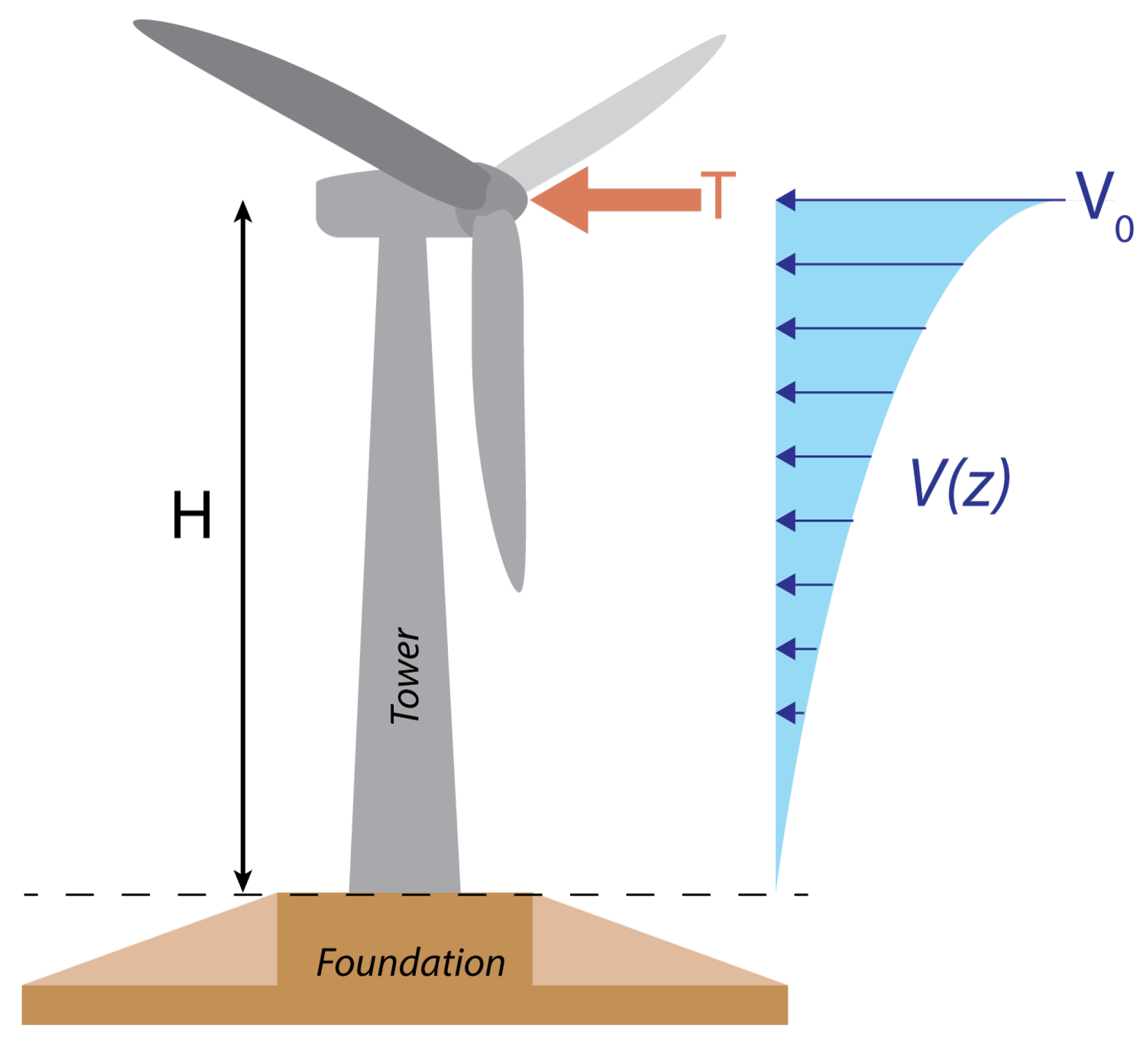
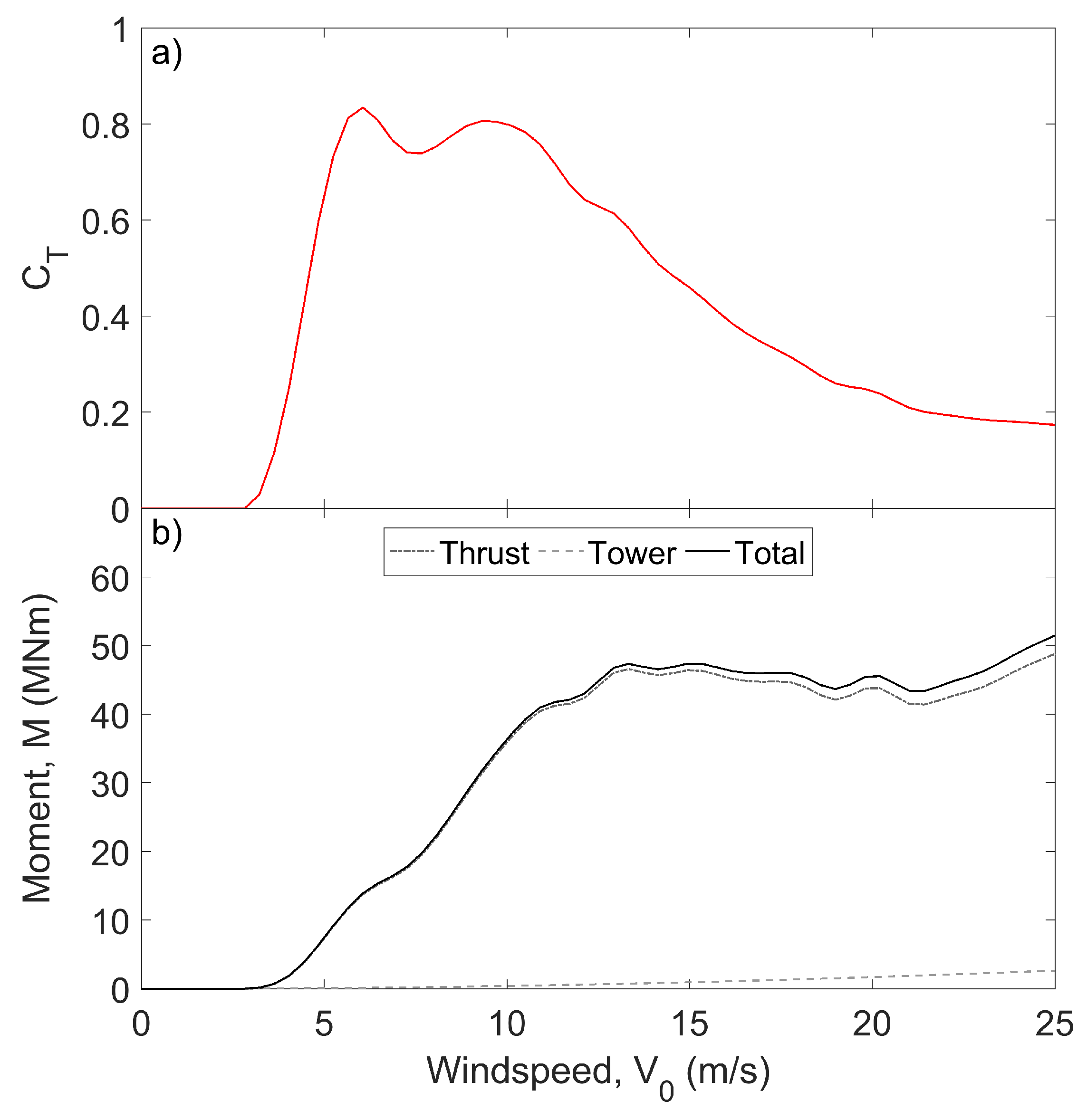
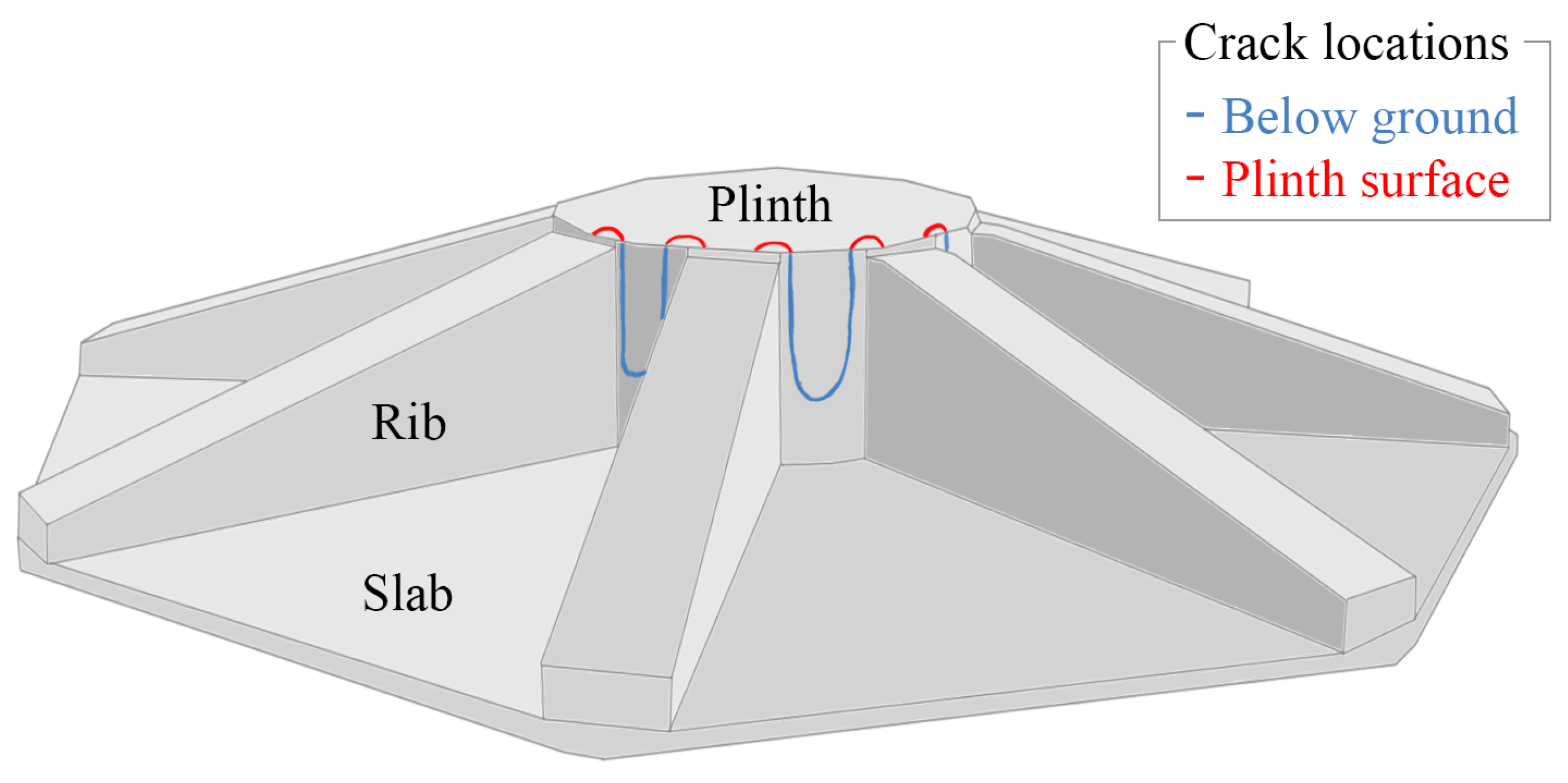
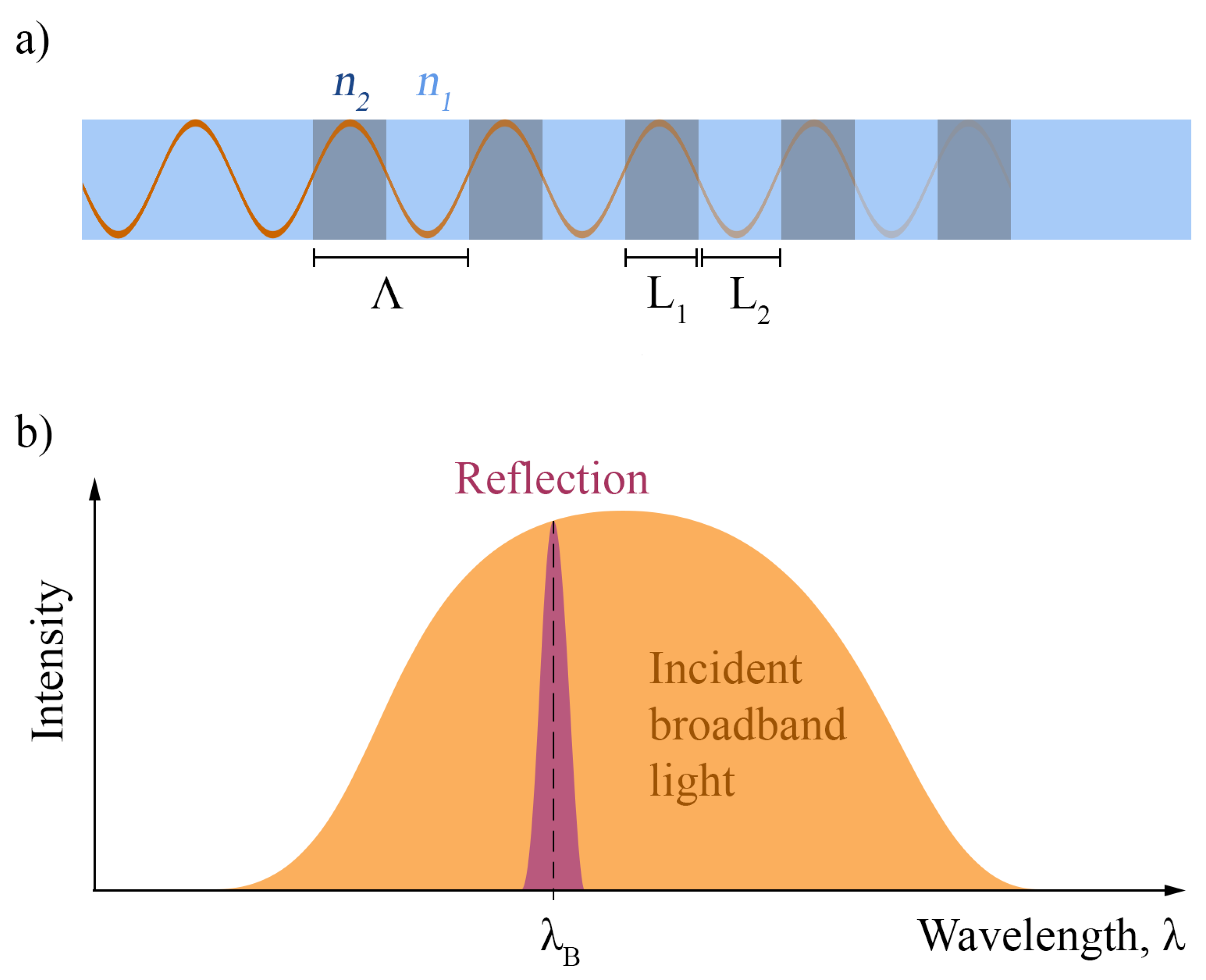
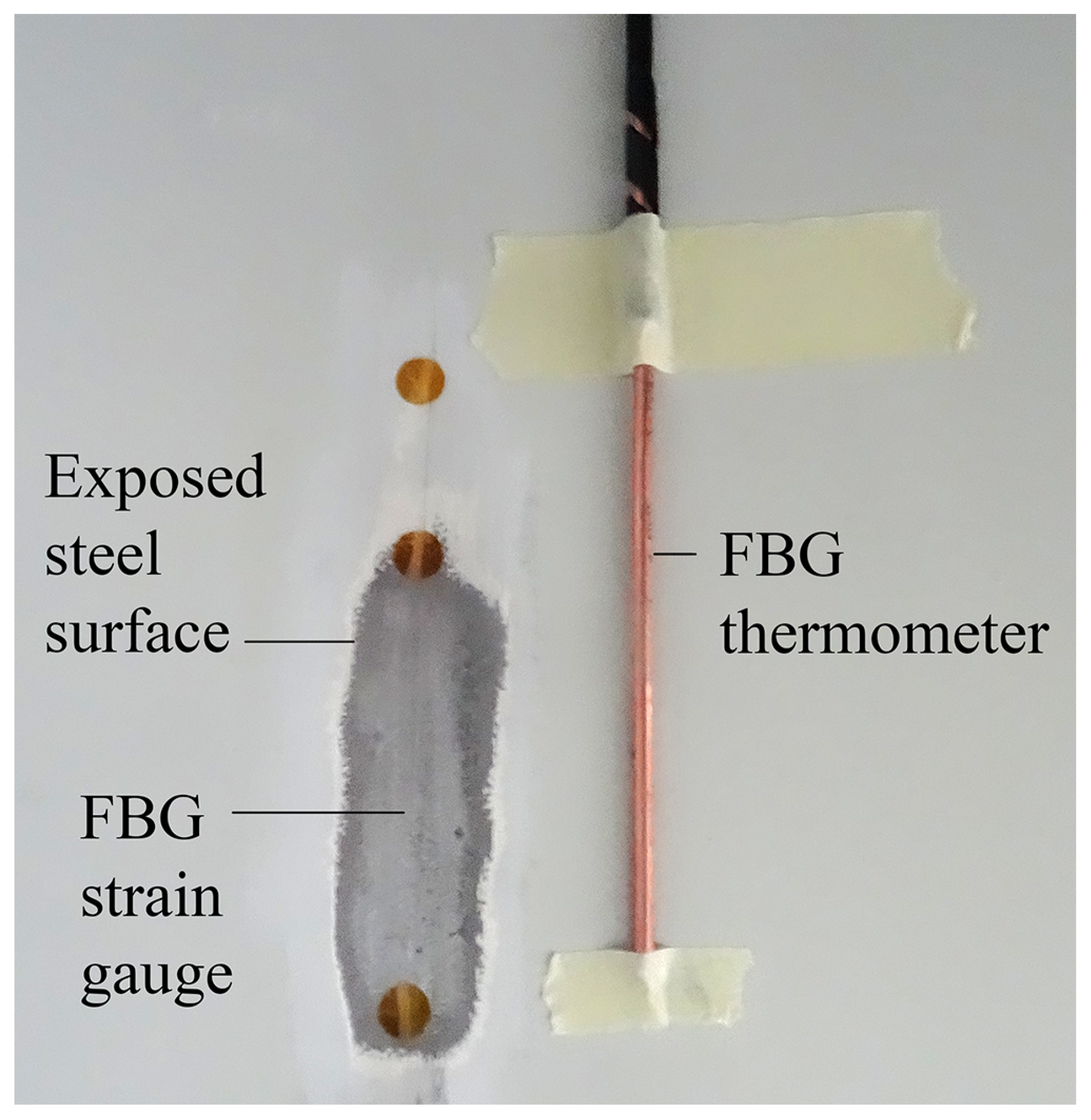
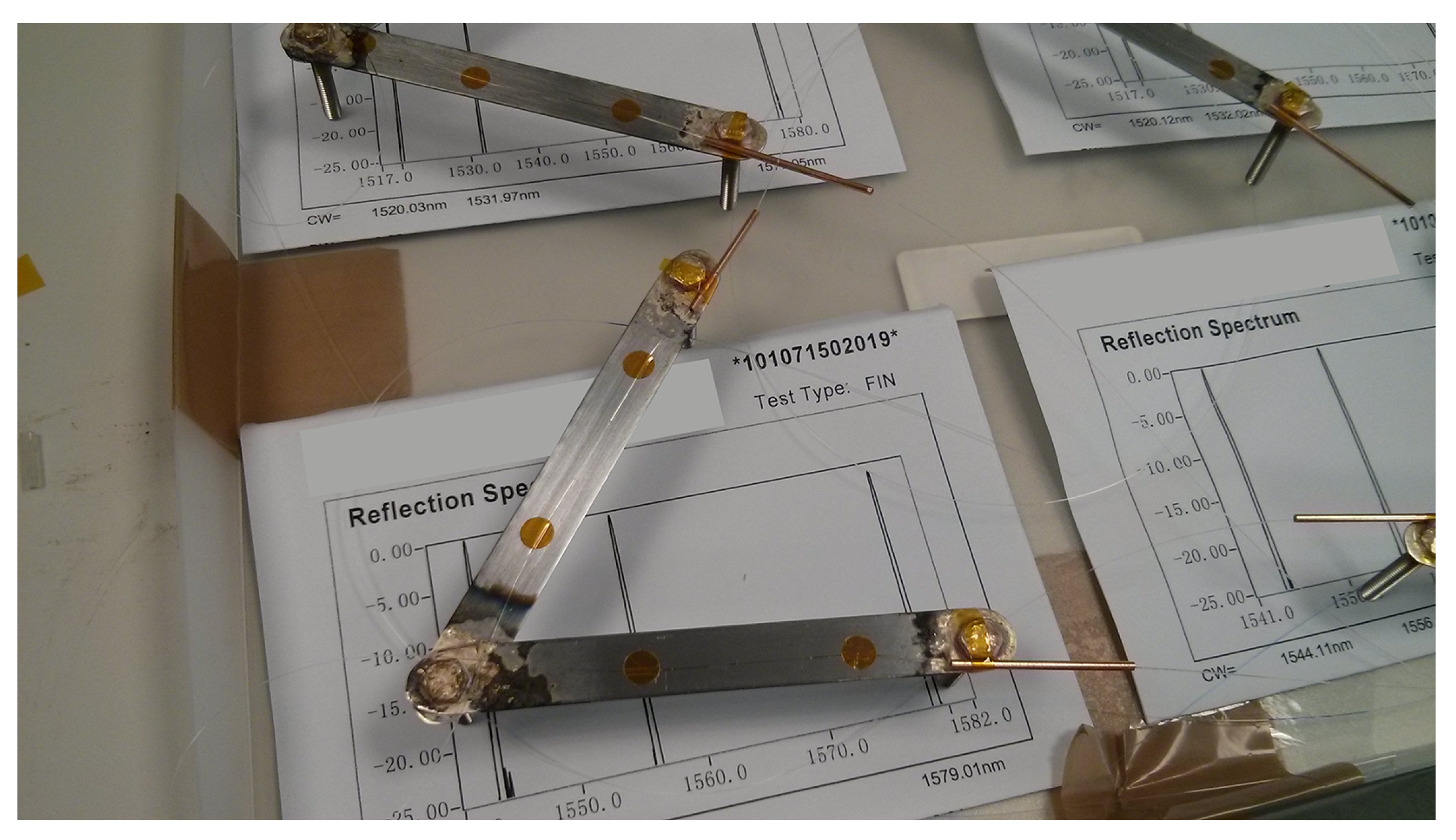

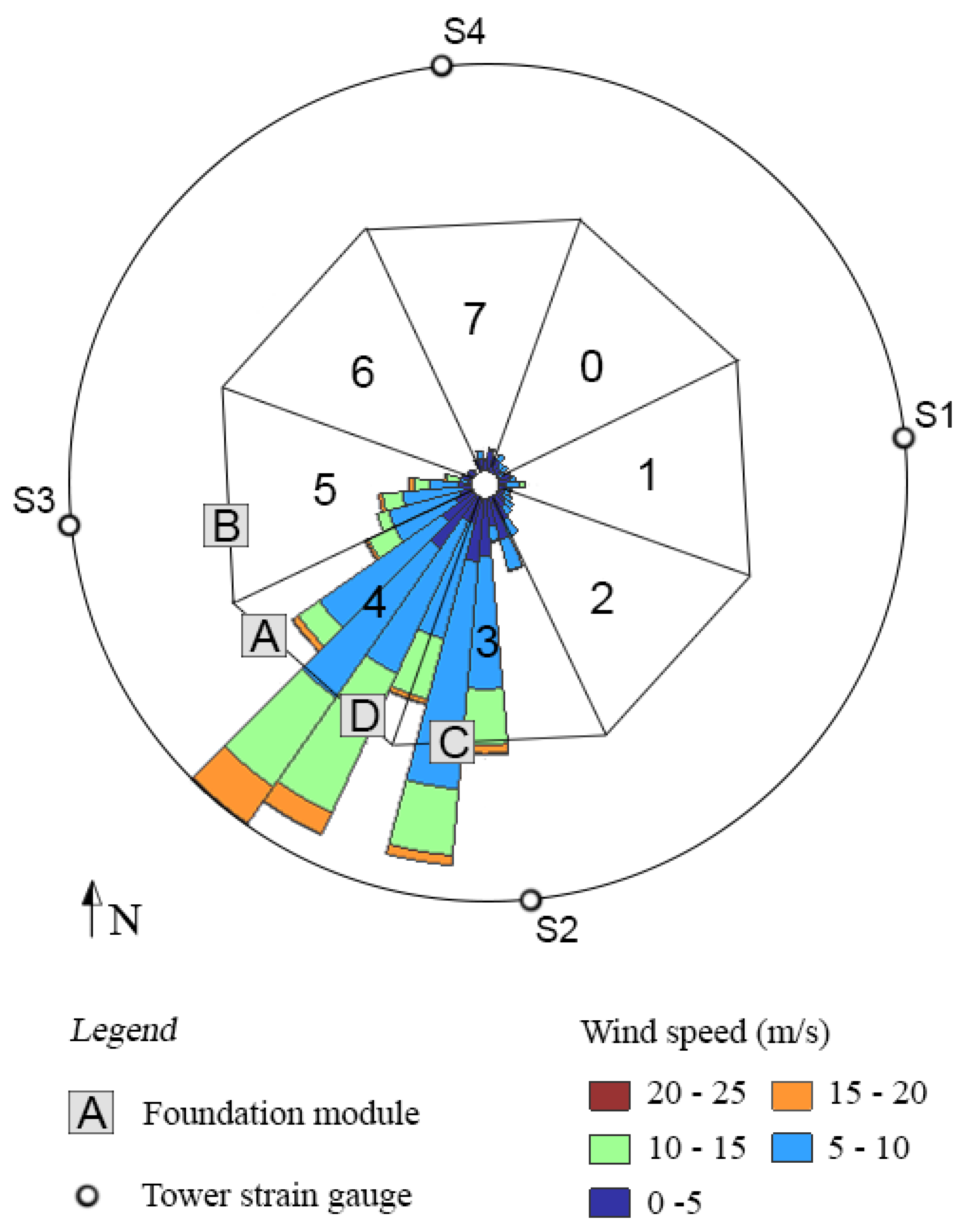
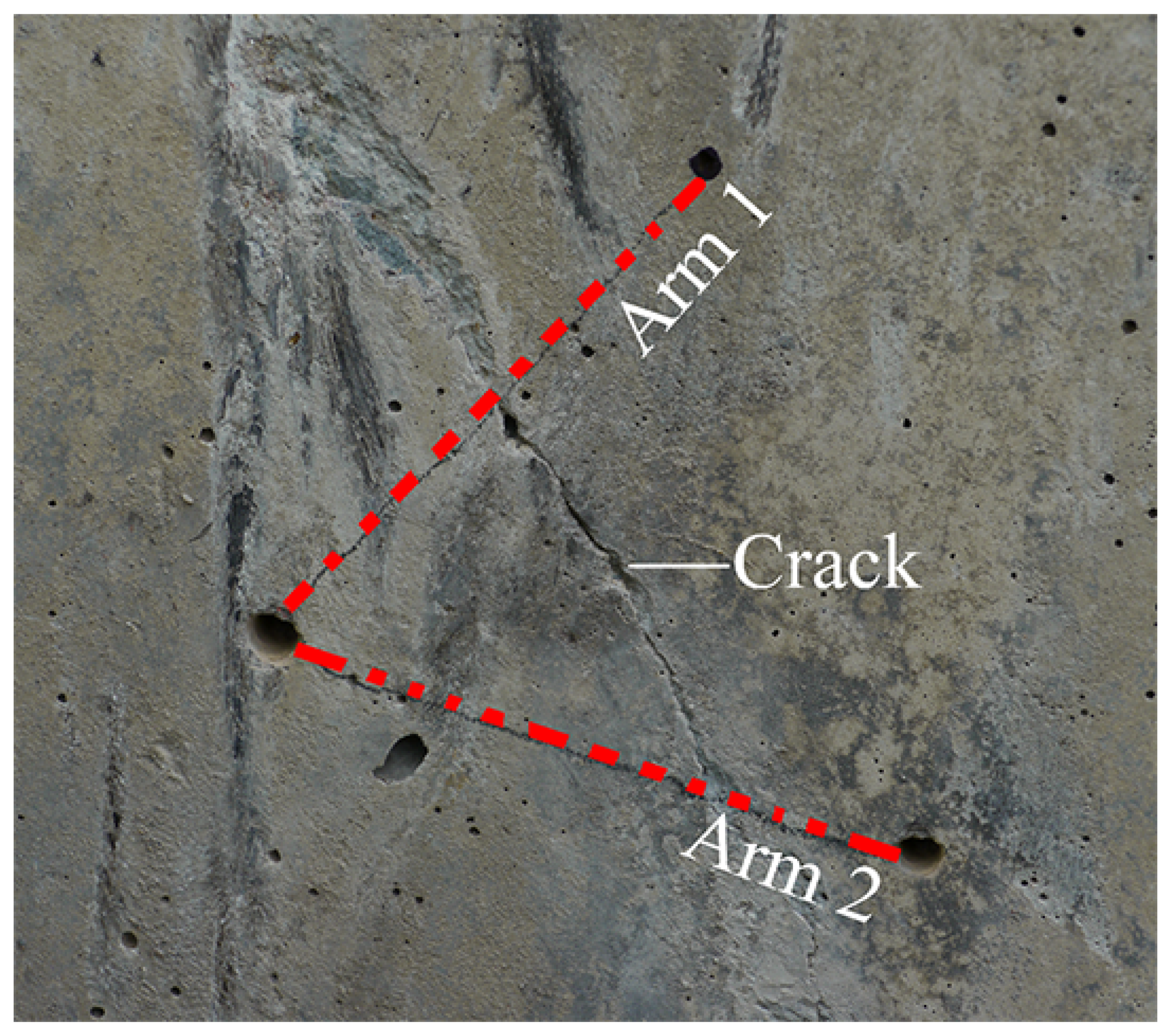
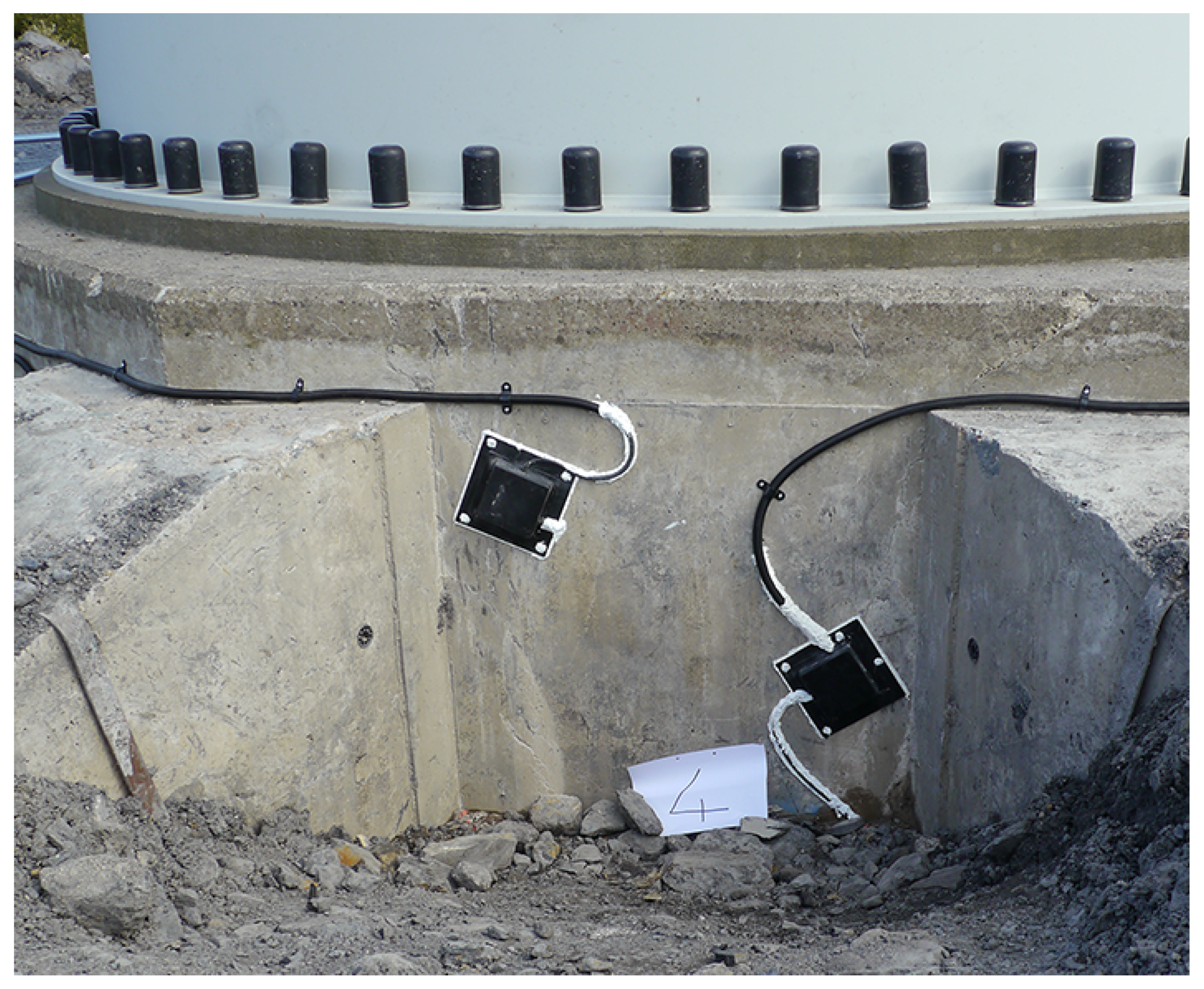
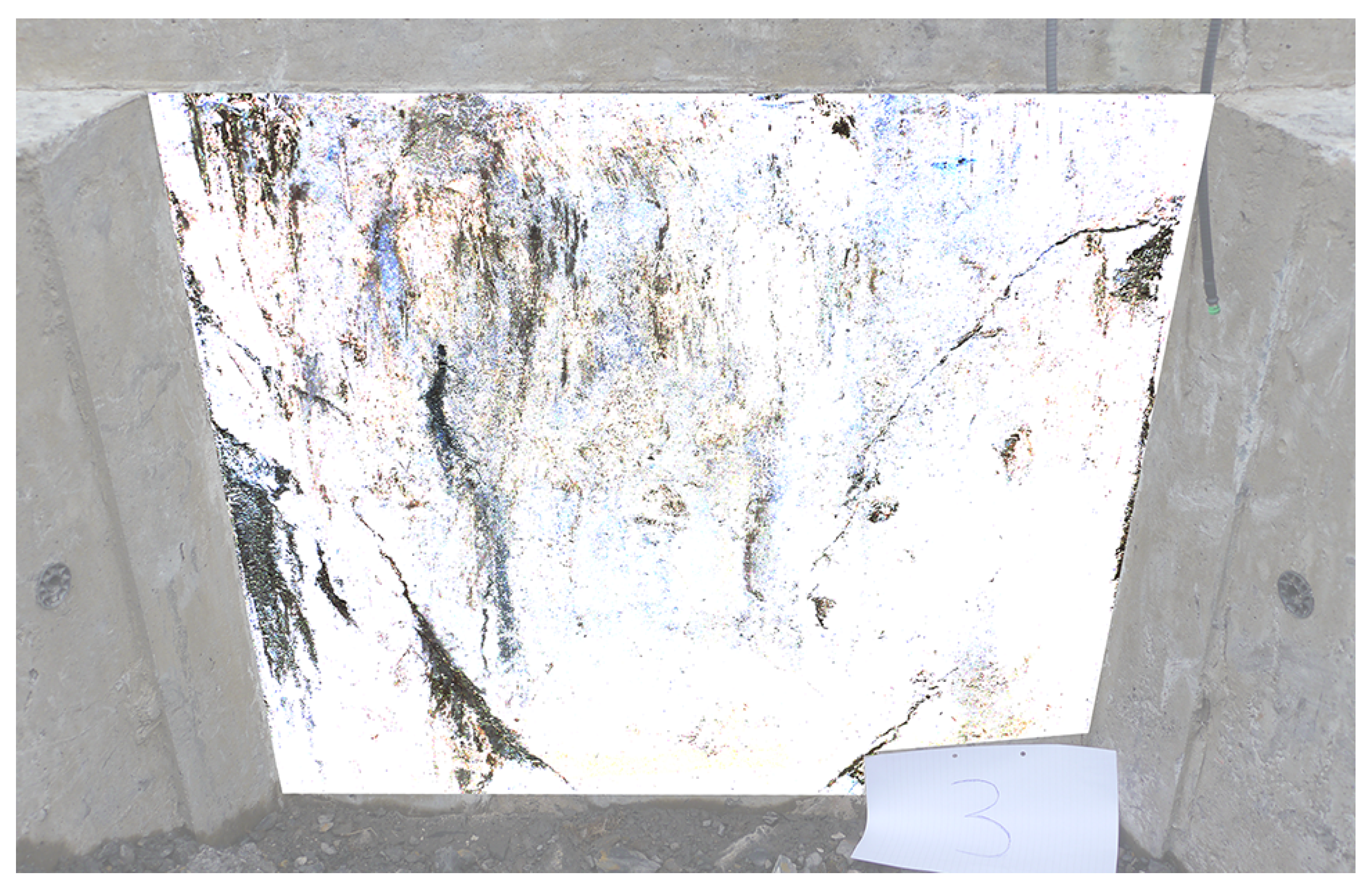
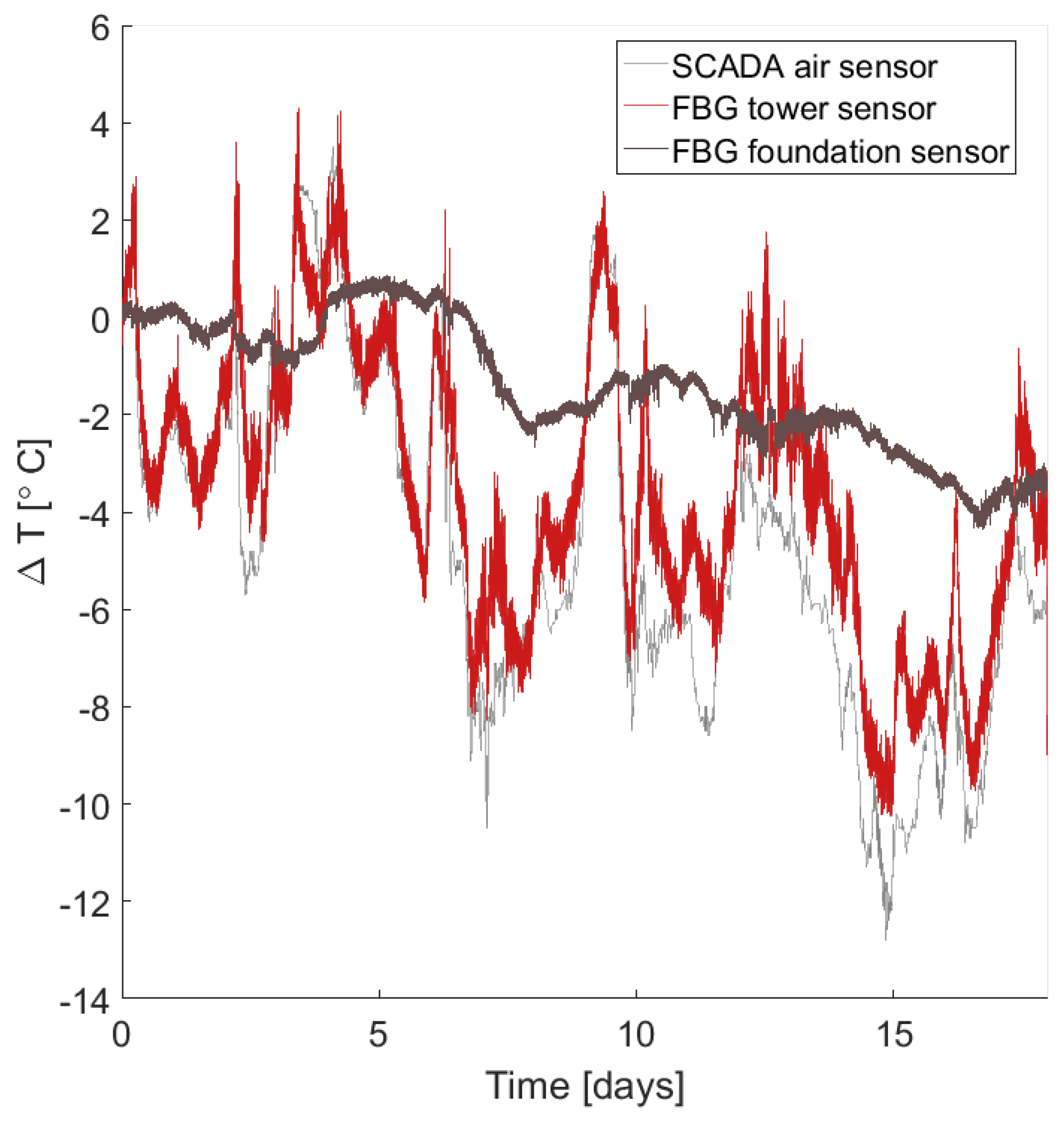
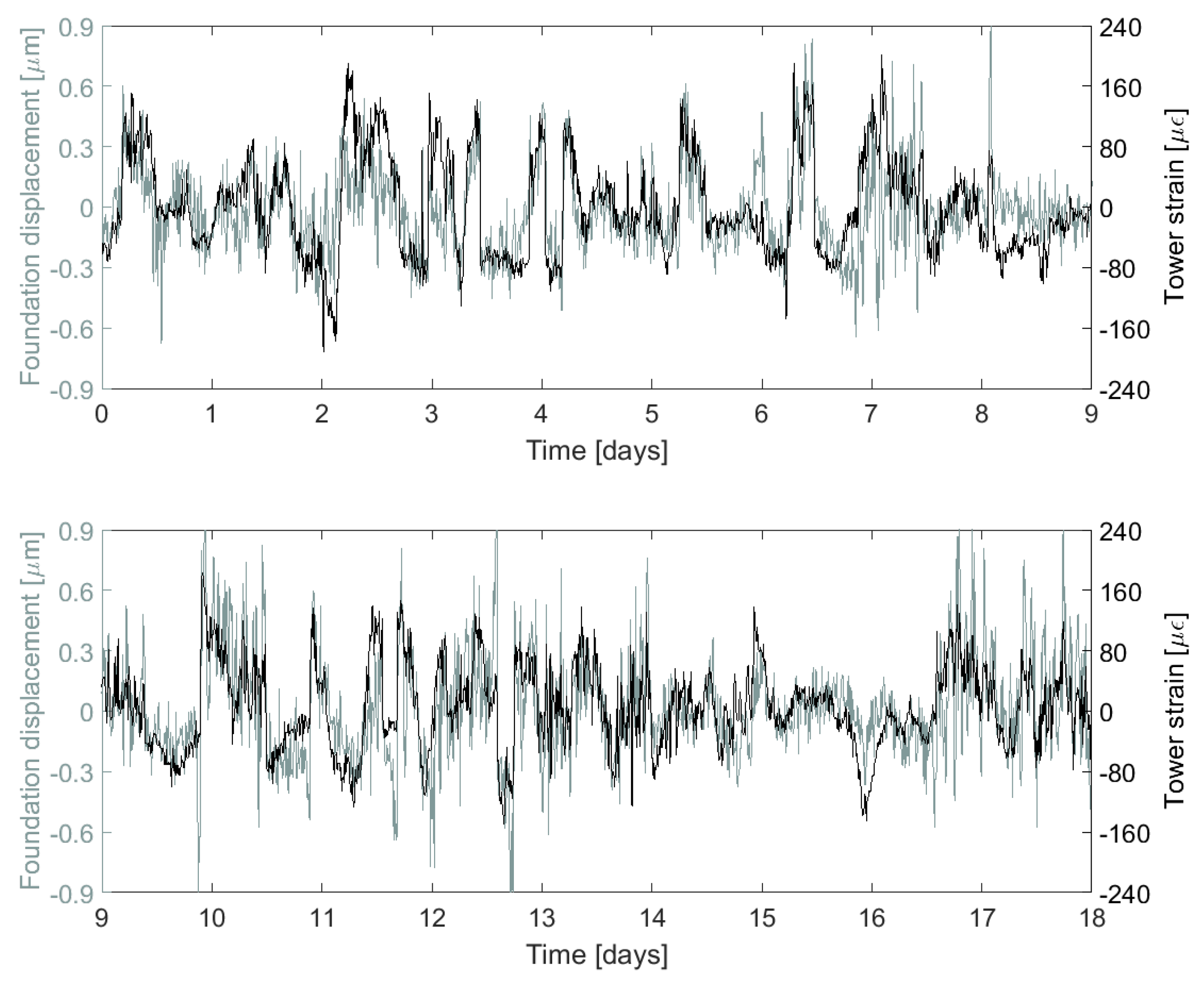
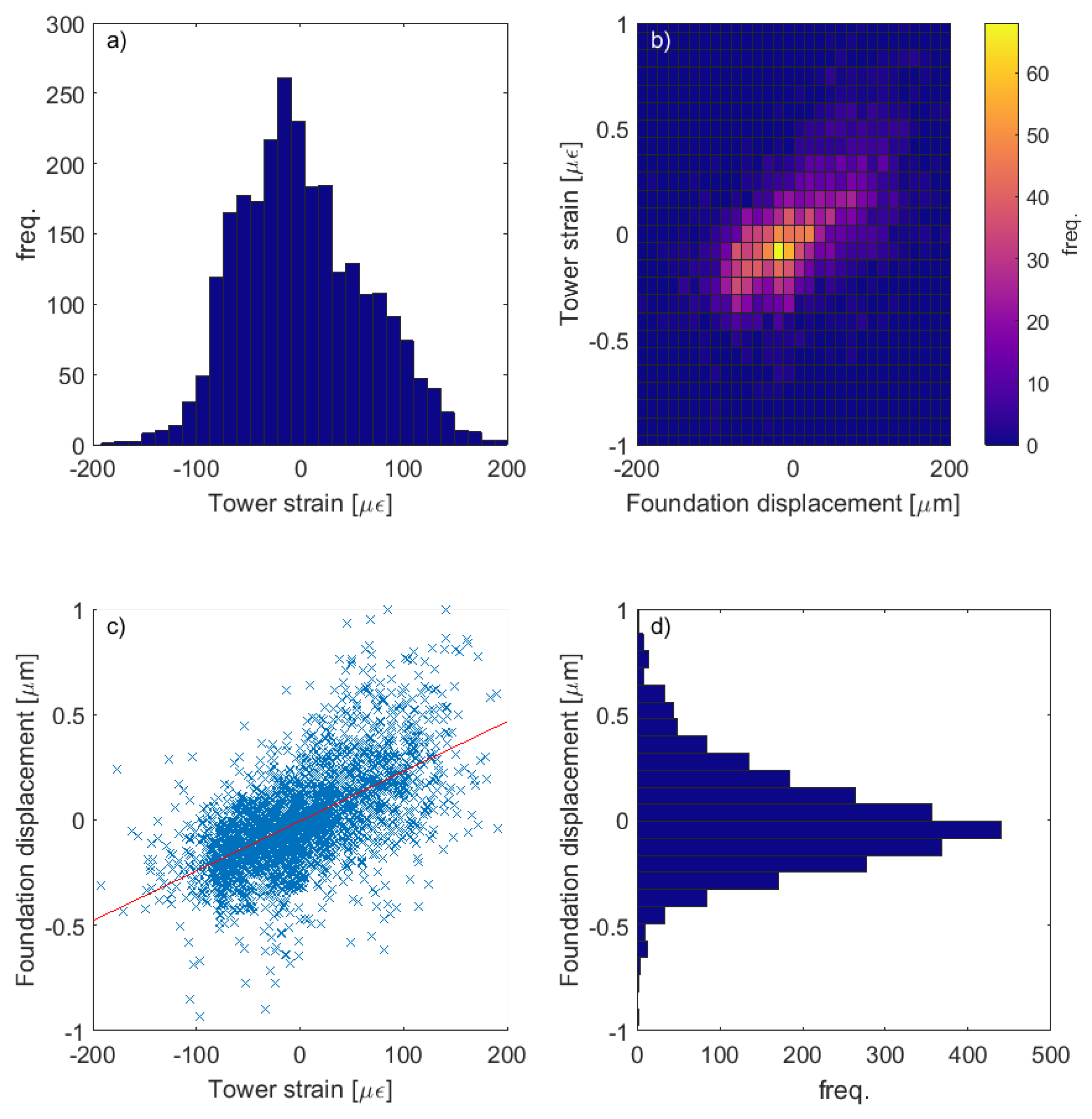
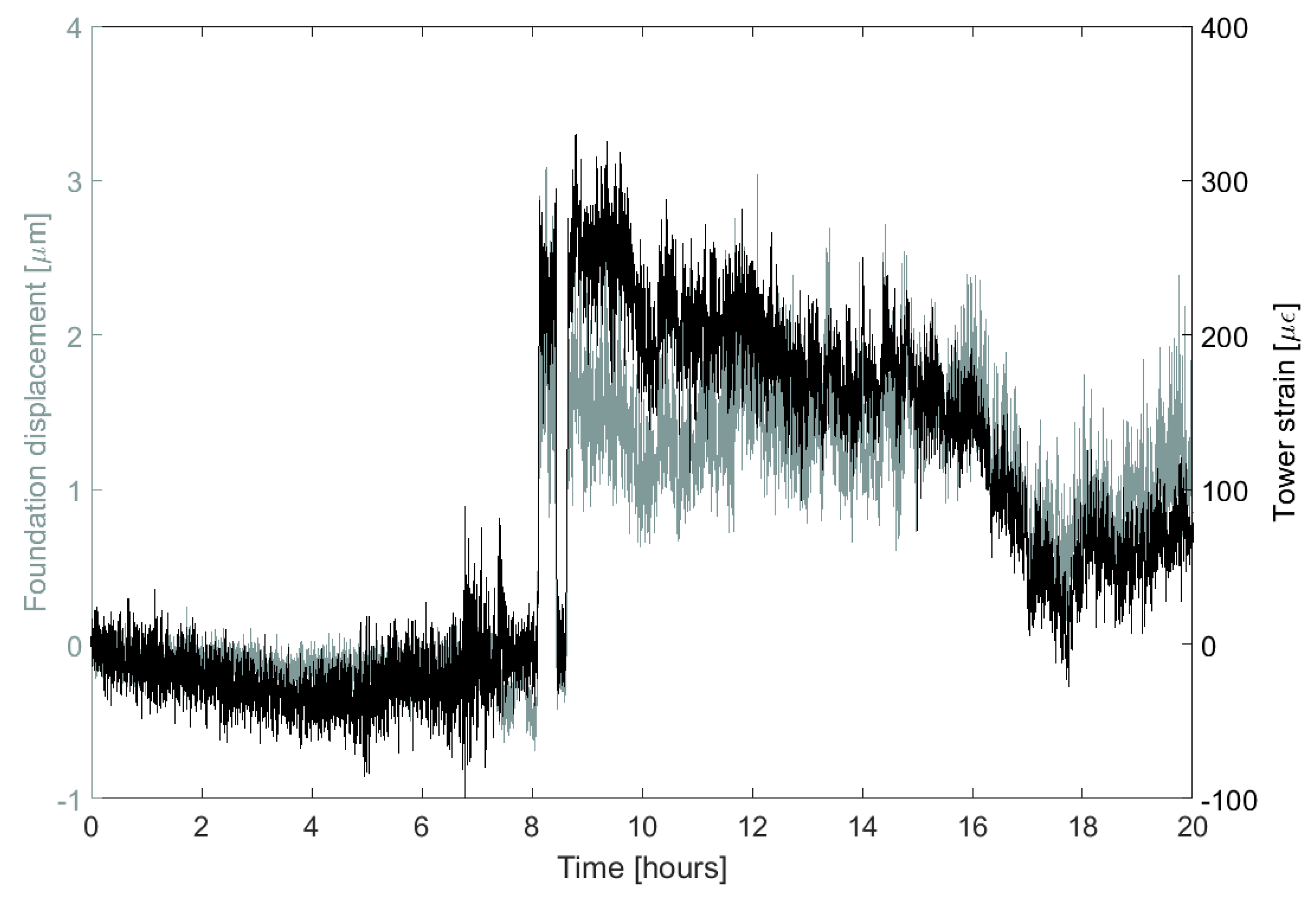

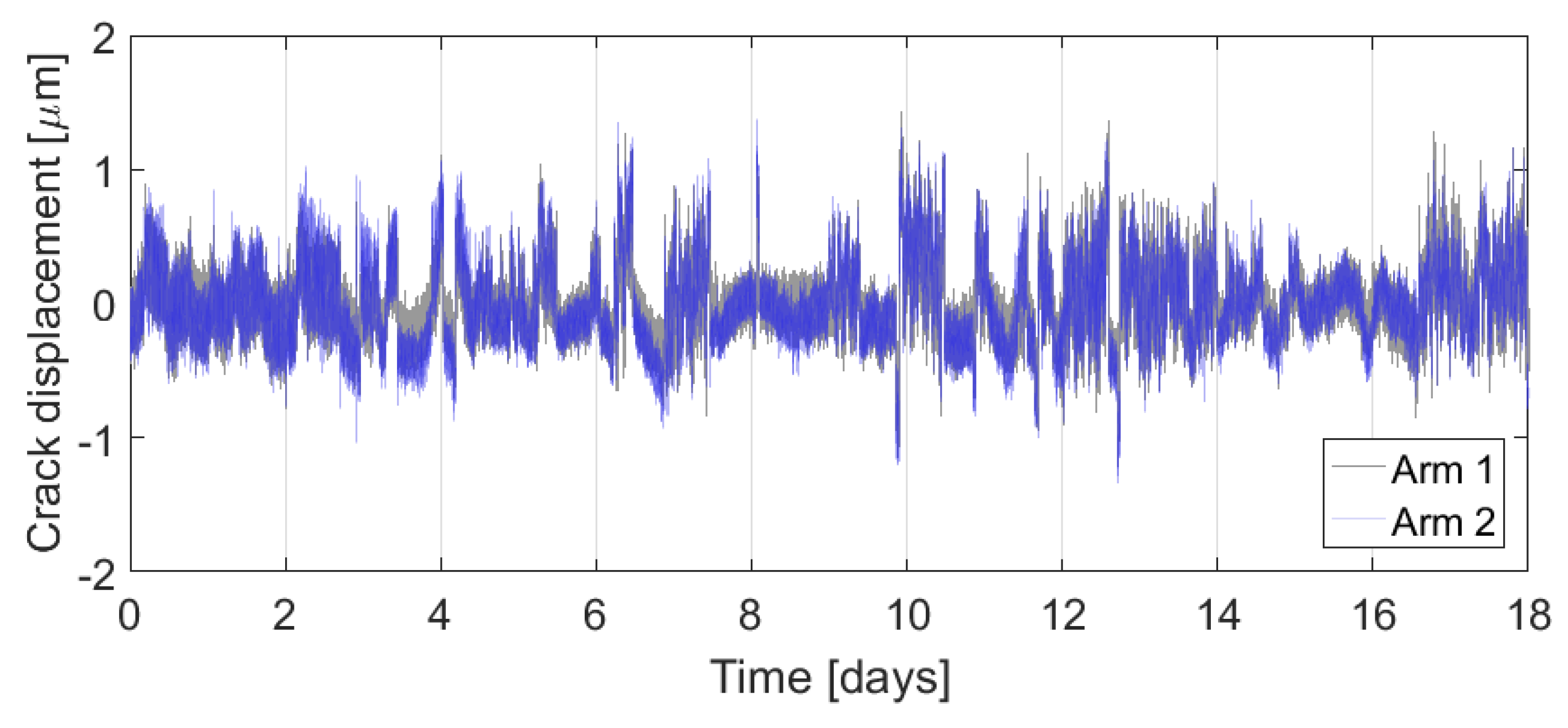
| Description | Value | Notes | |
|---|---|---|---|
| Air density | 1.225 kg/m3 | ||
| Wind Speed | 3–25 m/s | Range for rotor cut-in and cut-out [26] | |
| Thrust coefficient | 0–0.83 | Parametric dependence shown in Figure 2a [26] | |
| R | Rotor blade length | 54 m | |
| H | Hub height | 80 m | |
| Tower diameter | 5 m | Assumed constant at all heights for simplification | |
| Tower drag coefficient | 0.5 | An average value taken from [27] | |
| I | Tower second moment of area | 2.454 m3 | for thin-walled tubes of thickness |
| Tower wall thickness | 5 cm | ||
| E | Tower Young’s modulus | 200 GPa | Value for structural steel |
© 2017 by the authors. Licensee MDPI, Basel, Switzerland. This article is an open access article distributed under the terms and conditions of the Creative Commons Attribution (CC BY) license (http://creativecommons.org/licenses/by/4.0/).
Share and Cite
Perry, M.; McAlorum, J.; Fusiek, G.; Niewczas, P.; McKeeman, I.; Rubert, T. Crack Monitoring of Operational Wind Turbine Foundations. Sensors 2017, 17, 1925. https://doi.org/10.3390/s17081925
Perry M, McAlorum J, Fusiek G, Niewczas P, McKeeman I, Rubert T. Crack Monitoring of Operational Wind Turbine Foundations. Sensors. 2017; 17(8):1925. https://doi.org/10.3390/s17081925
Chicago/Turabian StylePerry, Marcus, Jack McAlorum, Grzegorz Fusiek, Pawel Niewczas, Iain McKeeman, and Tim Rubert. 2017. "Crack Monitoring of Operational Wind Turbine Foundations" Sensors 17, no. 8: 1925. https://doi.org/10.3390/s17081925
APA StylePerry, M., McAlorum, J., Fusiek, G., Niewczas, P., McKeeman, I., & Rubert, T. (2017). Crack Monitoring of Operational Wind Turbine Foundations. Sensors, 17(8), 1925. https://doi.org/10.3390/s17081925







